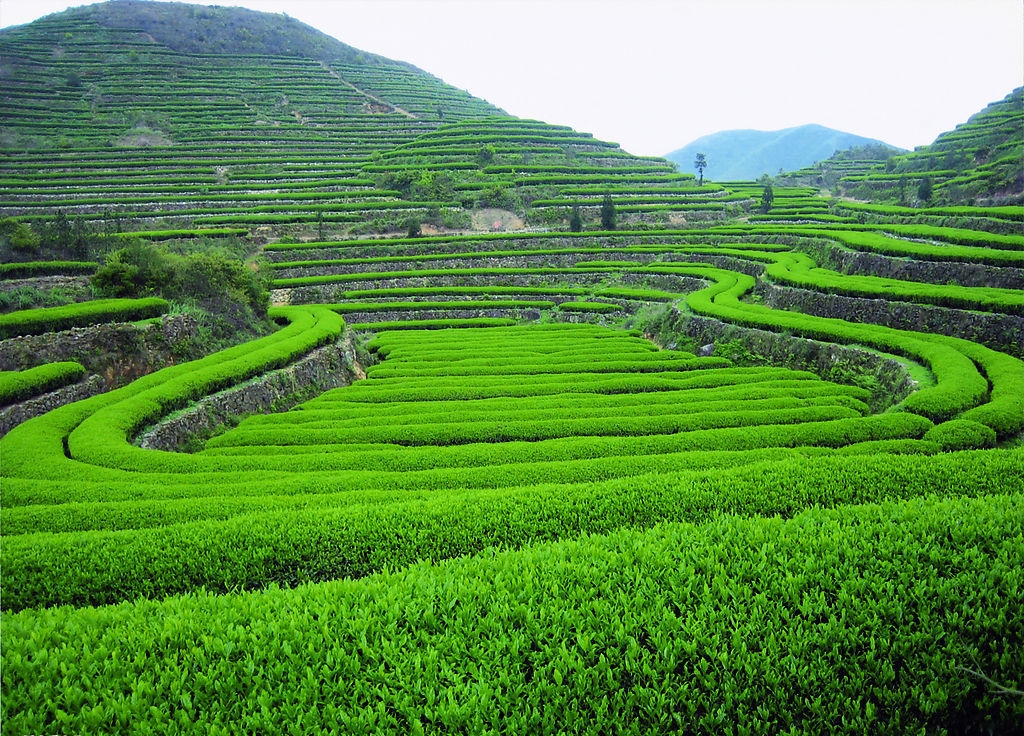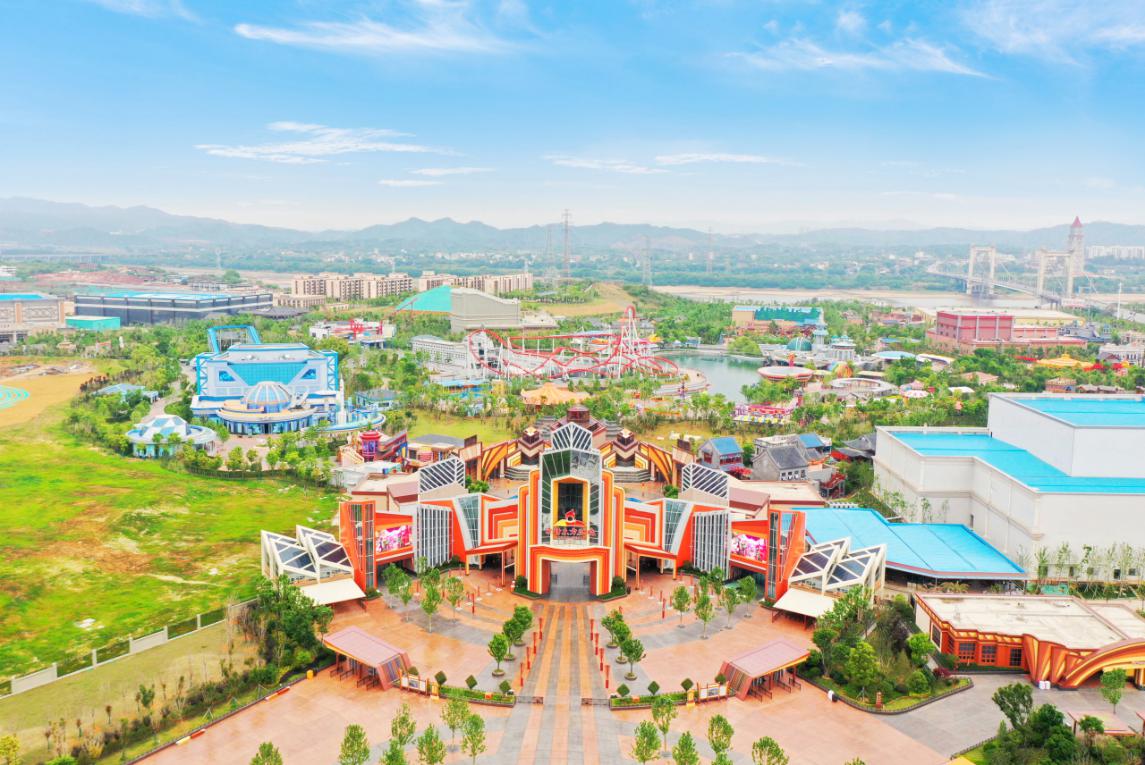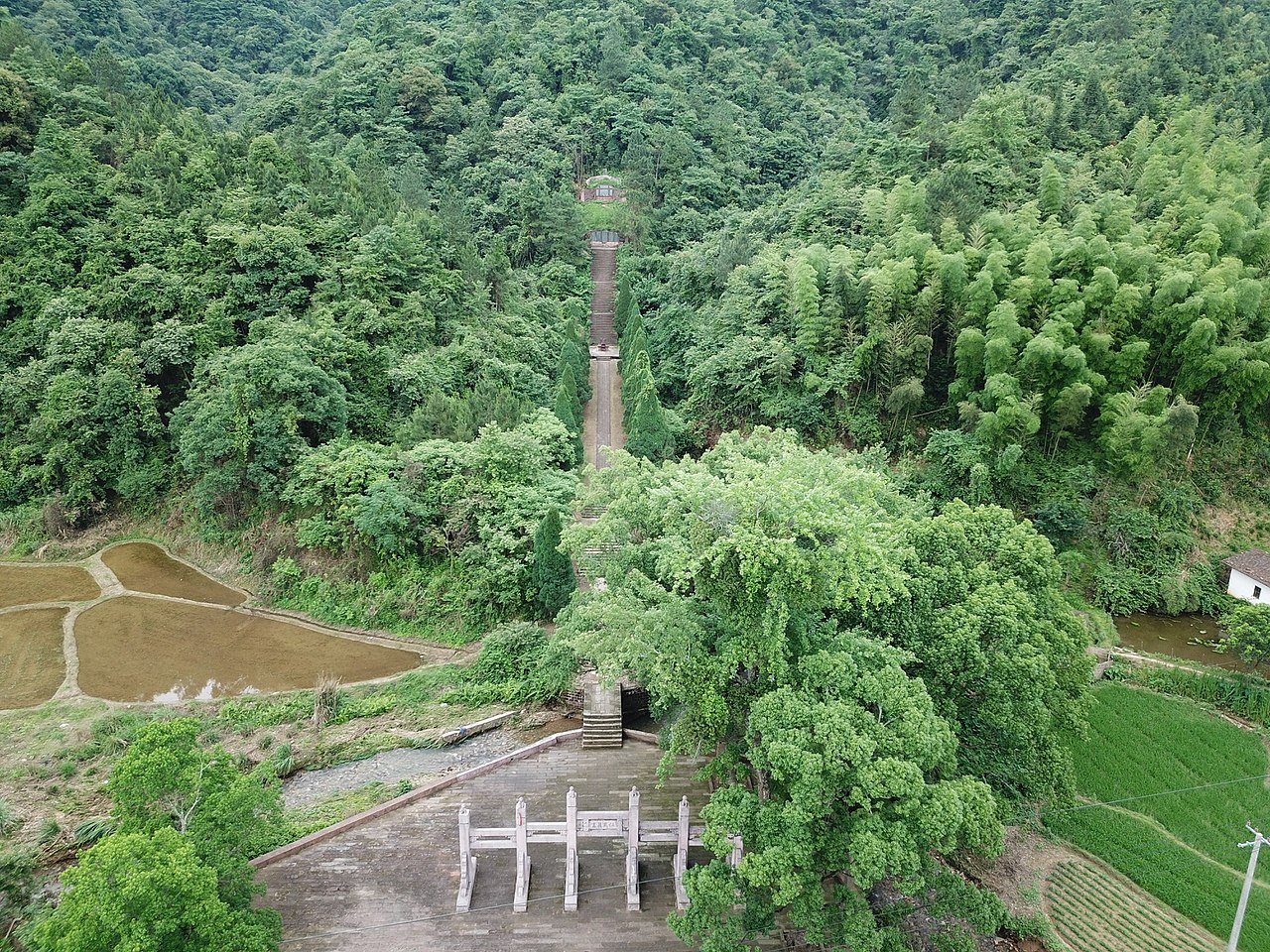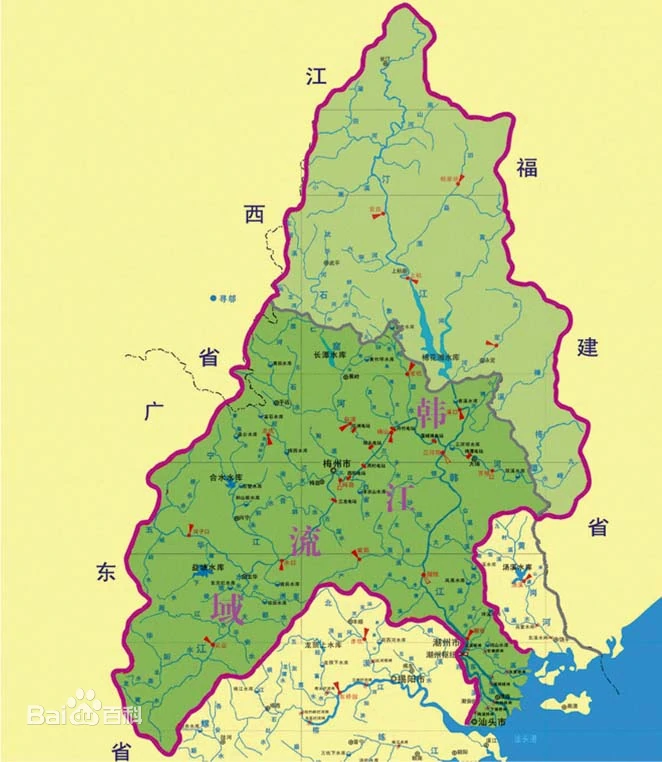
Deutsch-Chinesische Enzyklopädie, 德汉百科
 江西省-赣
江西省-赣

赣州市,简称虔,古称虔州、南康,通称赣南,是中华人民共和国江西省下辖的地级市,位于江西省南部、市境北连吉安市、抚州市,东接福建省三明市、龙岩市,南临广东省梅州市、河源市,西南达广东省韶关市,西靠湖南省郴州市,是江西省面积最大,人口最多的地级市[4],赣州是国家历史文化名城、中国优秀旅游城市、全国文明城市、国家森林城市,也是客家人主要聚居地之一,世称“客家摇篮”。[5]市政府驻长征大道8号。
赣州是江西省域副中心城市,全国稀有金属产业基地和先进制造业基地、原中央苏区振兴发展示范区、红色文化传承创新区和旅游目的地、区域性综合交通枢纽[6]、赣粤闽湘四省通衢的区域性现代化中心城市,有着千里赣江第一城、江南宋城、客家摇篮、红色故都、世界橙乡、世界钨都等美誉。

Das Gelbe Meer ist ein Teil des Chinesischen Meeres und ein von der Volksrepublik China und der Koreanischen Halbinsel umgebenes Randmeer des Pazifischen Ozeans. Der Golf von Bohai und die Koreabucht im Norden sind Teile des Gelben Meeres. Im Süden schließt sich das Ostchinesische Meer an.
Das Gelbe Meer misst 960 Kilometer von Nord nach Süd und ist 700 Kilometer breit. Die Flächenausdehnung beträgt 380.000 km². Es ist durchschnittlich 44 Meter und maximal 152 Meter tief. Damit ergibt sich ein Wasservolumen von 16.720 km³. Das Gelbe Meer ist ein flaches Meer, vergleichbar mit der Nordsee am anderen Ende des eurasischen Kontinents. Seine Wattflächen sind ein bedeutendes Rastgebiet für Watvögel.
Seine charakteristische Farbe, die zur Namensgebung führte, erhält es von dem nährstoffhaltigen gelben Schwemmsand, dem Löss, den der Gelbe Fluss und andere Flüsse an ihrer Mündung in das Gelbe Meer hineintragen und dort ablagern.
黄海(こうかい、英語:Yellow Sea)は、中国大陸と朝鮮半島の間にある海[1][2]。 黄河から運ばれる黄土により黄濁している部分があることから黄海と呼ばれている。フランスの地図製作者ダンヴィルが1737年に作成した『中国新地図帳』に黄海 (Hoang Hai ou Mer Jaune) と表記したことで国際的にも認知されるようになった。
The Yellow Sea is a marginal sea of the Western Pacific Ocean located between mainland China and the Korean Peninsula, and can be considered the northwestern part of the East China Sea. It is one of four seas named after common colour terms (the others being the Black Sea, the Red Sea and the White Sea), and its name is descriptive of the phenomenon whereby fine sand grains from the Gobi Desert sand storms, that descend annually from the northwest, turn the surface of its waters a golden yellow.
The innermost bay of northwestern Yellow Sea is called the Bohai Sea (previously Pechihli Bay or Chihli Bay), into which flow some of the most important rivers of northern China, such as the Yellow River (through Shandong province and its capital Jinan), the Hai River (through Beijing and Tianjin) and the Liao River (through Liaoning province). Sand and silt carried down by these rivers contribute further to the sea's colour. The northern extension of the Yellow Sea is called the Korea Bay, into which flow the Yalu River, the Chongchon River and the Taedong River.
La mer Jaune est un bras de mer de l'océan Pacifique qui sépare la Chine de la péninsule coréenne. Elle s'ouvre au sud sur la mer de Chine orientale qui la borde. Son nom provient du sable et des sédiments apportés par le vent soufflant depuis le désert de Gobi et par les fleuves, en particulier le fleuve Jaune et le Hai He qui lui donnent une couleur jaune1. En Corée, elle est aussi appelée la mer de l'Ouest. Sa partie septentrionale est appelée golfe de Corée et communique avec le golfe de Bohai qui se trouve de l'autre côté des péninsules du Liaodong et du Shandong. Cette dernière partie est aussi incluse dans la mer Jaune. Celle-ci mesure 960 km du nord au sud et 700 km de l'est à l'ouest pour une superficie de 380 000 km2, le golfe de Bohai non compris2. Reposant sur le plateau continental, c'est une mer peu profonde : la profondeur moyenne est de 44 m pour un maximum de 152 m. Cette mer est récente puisqu'elle a été formée à la fin du dernier âge glaciaire, il y a près de 10 000 ans lorsque le niveau des eaux monta de 120 mètres. Le fond de la mer descend lentement du côté de la Chine et remonte plus rapidement du côté de la Corée. La côte de Corée du Sud est très découpée, comprenant de nombreuses îles telles que celles de Ganghwa, Jeju et Yeonpyeong. Les plus grands fleuves proviennent de Chine et débouchent dans le Bohai (le fleuve Jaune, le Hai He et le Liao). Au niveau de la péninsule coréenne, le Yalou et le Taedong se jettent dans le golfe de Corée tandis que le fleuve Han arrive dans la mer Jaune proprement dite.
Il mar Giallo (in cinese 黄海S, Huáng HǎiP e in coreano: 황해, Hwanghae) è una porzione dell'Oceano Pacifico posta a settentrione del mar Cinese Orientale, tra la costa cinese e la penisola coreana. Copre una superficie di circa 417000 km² e sulle sue acque si affacciano la Cina, la Corea del Nord e la Corea del Sud.
Il mar Giallo è chiamato mare Occidentale nelle due Coree. Il suo nome deriva dai sedimenti di colore giallo che colorano le sue acque, apportati da vari fiumi, in particolare dal fiume Giallo (Huáng Hé).
La parte più interna del mar Giallo è costituita dal golfo di Bohai che è compreso tra le penisole di Liaodong a nord e dello Shandong a sud.
È un mare poco profondo con una profondità massima di 105 metri, ma nonostante ciò è molto trafficato con importanti porti sia sulla costa cinese sia su quella coreana. La parte settentrionale del mare gela in inverno.
El mar Amarillo (en chino simplificado, 黄海; pinyin, huáng hǎi, en coreano, 황해 [Hwang Hae]) es la parte norte del mar de la China Oriental que se convierte en parte del océano Pacífico. Es un amplio mar, ocupando un área de cerca de 417 000 km², aunque es poco profundo, con una profundidad máxima de 105 metros.
Está situado entre la China continental y la península de Corea. Su nombre proviene de las partículas de arena que le dan ese color al agua, originalmente del río Amarillo, Huang he. Se conoce también localmente, en Corea del Sur, con el nombre de mar del Oeste.
La inmensa bahía que forma el fondo del mar Amarillo recibe el nombre de mar de Bohai (conocido anteriormente como bahía de Zhili). En ella desemboca el río Amarillo, después de cruzar la provincia de Shandong y su capital, Jinan, así como el río Hai que cruza Pekín y Tianjin.
La bahía de Corea, entre la provincia china de Liaoning y el noroeste de Corea del Norte, forma parte también del mar Amarillo. El mar de Bohai y la península de Corea están separadas por la península de Liaodong, con la ciudad de Dalian situada en su extremo sur.
Жёлтое мо́ре (кит. упр. 黄海, пиньинь Huánghǎi, кор. 황해 хванхэ, в КНДР известно как 조선서해, 朝鮮西海 чосон-сохэ — «Западно-Корейское море») — мелководное шельфовое полузамкнутое окраинное море Тихого океана у восточного побережья Азии к западу от Корейского полуострова. Название дано по цвету воды, вызванному наносами китайских рек и в меньшей степени пыльными бурями. Весной жёлтые пыльные бури бывают настолько сильны, что судам приходится прекращать движение.

绿茶是茶叶的一种。经过杀青、揉捻、干燥,大部分白毫脱落,热水浸泡后依种类呈淡绿色至黄绿色的茶汤。绿茶通过杀青工艺的不同可分为四种:炒青茶、蒸青茶、烘青茶、晒青茶。中国大陆与台湾在绿茶制作上以炒青为主;日本制作绿茶的方式则以蒸青为主。
炒青即将茶叶鲜叶在摄氏120度左右的铁锅中翻炒,使其水分散失,使其变得绵软,以便做形。传统工艺为徒手翻炒,来到现代为机械翻炒。绿茶没有焙火工序,所以可以称为生茶。[1]
中国大陆大部分名茶为绿茶,如 产于杭州西湖龙井、苏州洞庭山碧螺春、秦岭山脉北麓的紫阳富硒毛尖、汉中仙毫等。在清明之前,茶树刚发芽时采摘的,为“明前茶”也称为“莲心”或“银针”;在谷雨前采摘的,为“雨前茶”,茶叶已展开,也称为“旗枪”;在立夏前采摘的为“三春茶”,已经有两片叶展开,也称为“雀舌”;立夏后再采摘,叶片已变厚,为“四春茶”,也可称做“梗片”。
Grüntee wird aus den gleichen Pflanzen wie Schwarztee hergestellt; erst der Verarbeitungsprozess lässt den Unterschied entstehen.
Bei der Grünteeherstellung ist besondere Sorgfalt und Schnelligkeit gefragt, damit die Teeblätter nach der Ernte nicht oxidieren und so zu Schwarztee werden würden.
Daher werden sie sofort nach dem Pflücken entweder im Wasserdampf blanchiert - die japanische Methode - oder sie werden über Feuer getrocknet, wie es in China üblich ist.
Damit Ihr Grüntee gelingt, sollten Sie ihn niemals mit kochendem sondern stets mit etwas abgekühltem Wasser zubereiten. Außerdem ist er ergiebiger als schwarzer Tee, so dass Sie weniger Teeblätter benötigen.
Sollte der Tee Ihnen zu grasig oder spinatig sein, sollten Sie kühleres Wasser und etwas weniger Teeblätter verwenden. Weitere Tipps finden Sie bei unseren Zubereitungshinweisen.
(Quelle:http://www.teespeicher.de/Gruentee1.html)
Grüner Tee oder Grüntee (japanisch 緑茶 ryokucha, chinesisch 綠茶 / 绿茶, Pinyin lǜchá) ist eine Variante, Tee herzustellen. Die Teeblätter werden im Gegensatz zu schwarzem Tee nicht fermentiert. Wegen der anderen Verarbeitung werden für grünen Tee eher die Blätter von Camellia sinensis gegenüber der Varietät assamica bevorzugt, da sich die kleinblättrige, zartere Sorte besser eignet. Grüner Tee unterscheidet sich von schwarzem Tee unter anderem in der Zubereitung, im Geschmack, den Inhaltsstoffen und Wirkungen des Aufgusses.
緑茶(りょくちゃ 拼音: )は、チャノキの葉から作った茶のうち、摘み取った茶葉を加熱処理して発酵を妨げたもの。もしくはそれに湯を注ぎ、成分を抽出した飲料のこと。
日本においては日本茶と同意に使われることが多い。日本茶(煎茶、ほうじ茶、抹茶など)はその多くが緑茶であり、日本でもっとも良く飲まれている茶である。中国茶もジャスミン茶として飲まれるものを含め緑茶に分類される物が主流で、中国や台湾で最も飲まれているのも緑茶である。烏龍茶やプーアル茶などは比較的特殊な部類に入り、産地を離れると余り飲まれず、日本人にとっての玉露や抹茶のような扱いになる。
日本では寿司や菓子とともに、あるいは食後に熱い茶を飲むのが一般的だった。近年、ペットボトル入りの緑茶の普及と健康志向の高まりで、水やジュースなどと同じ感覚で屋外や運動中に冷えた茶を飲む例が増えている。飲料メーカーは「ノンカロリー」「カテキン効果」などを宣伝文句に販売し、欧米やアジア諸国でも緑茶ブームが起きている。また、静岡では焼酎などを緑茶で割って「お茶割り」という名前で飲むことがあり、これを「静岡割り」として普及させようという動きもある。
Green tea is a type of tea that is made from Camellia sinensis leaves that have not undergone the same withering and oxidation process used to make oolong teas and black teas.[1] Green tea originated in China, but its production and manufacture has spread to many other countries in Asia.
Several varieties of green tea exist, which differ substantially based on the variety of C. sinensis used, growing conditions, horticultural methods, production processing, and time of harvest. Although there has been considerable research on the possible health effects of consuming green tea regularly, there is little evidence that drinking green tea has any effects on health.[2]
Un thé vert, en chinois simplifié : 绿茶 ; chinois traditionnel : 綠茶 ; pinyin : , et en japonais 緑茶 (Ryokucha) est un thé dont l'oxydation naturelle est rapidement stoppée après la cueillette. Il en résulte un thé non-oxydé maximisant ainsi sa teneur en EGCG et autres catéchines. Le thé vert contient également une concentration importante de L-théanine et une concentration de caféine inférieure à celle du thé noir. Une fois infusé, il peut être consommé chaud ou froid.
L'arrêt de l'oxydation des feuilles de thé, moment clé dans la production du thé vert, peut être obtenu selon deux méthodes : la méthode chinoise, dans laquelle les feuilles sont chauffées dans des cuves, et la méthode japonaise. Les thés produits selon la méthode japonaise1 bénéficient d'un arrêt de l'oxydation à la vapeur ce qui préserve davantage les propriétés des feuilles de thé qu'avec la méthode chinoise2. Ces thés de qualité se reconnaissent à la couleur foncée de leurs feuilles, à leur odeur d'algues une fois infusés et à leur goût herbacé et iodé. De nombreux producteurs, notamment au Japon3,4, se tournent aujourd'hui vers une production de thés verts conforme aux exigences de l'agriculture biologique.
Le thé vert est le thé le plus consommé en Chine, en Corée et au Japon. Il se répand aujourd'hui de plus en plus en Occident, où l'on boit traditionnellement plutôt du thé noir. Les différents terroirs, cultivars utilisés et modes de culture permettent d'obtenir des thés verts très différents. Si le sencha est le thé quotidien des Japonais, lors de la cérémonie du thé japonaise c'est du matcha, une poudre de thé vert broyé, qui est utilisé. Le matcha est désormais incorporé dans des pâtisseries et est l'ingrédient de base du matcha latte et du matcha frappé. Les thés verts les plus prestigieux comme le gyokuro (Japon) ou le long jing (Zhejiang, Chine) peuvent atteindre des prix importants sur le marché. Le thé vert intervient également dans la production de thé aromatisé comme le genmaicha qui lui associe du riz ou le gunpowder, qui est l'ingrédient de base du thé à la menthe.
Il tè verde (in cinese 綠茶T, 绿茶S, lǜcháP; in coreano 녹차?, nokchaLR, in giapponese: 緑茶 ryokucha?, in vietnamita Trà xanh) è una variante del tè ottenuta con foglie di Camellia sinensis (o Thea chinensis) che durante la lavorazione non devono subire alcuna ossidazione. Di origini cinesi come tutti i tè, per secoli è stato consumato in varie regioni asiatiche, dal Giappone al Medio Oriente. Negli ultimi anni ha trovato la sua diffusione anche in Occidente, dove per tradizione si consuma per lo più tè nero (più correttamente, rosso). A livello globale è la seconda varietà di tè più diffusa: dei 2,5 milioni di tonnellate di tè che si producono a livello mondiale, il 20% è rappresentato da tè verde (il 78% da tè nero, il 2% da tè blu).[1]
El té verde (chino tradicional: 綠茶, chino simplificado: 绿茶, pinyin: Lǜ chá) es un tipo de té Camellia sinensis que no ha sufrido una oxidación durante su procesado, a diferencia del té negro, ya que las hojas se recogen frescas y después de someterse al secado, se prensan, enrollan, trituran y finalmente se secan. El té verde supone entre una cuarta y una quinta parte del total de té producido mundialmente. Los principales países productores de té verde son China, Japón y Vietnam.1Se ha hecho más popular en Occidente, que tradicionalmente toma té negro.
Зелёный чай — чай, подвергнутый минимальной ферментации (окислению).
И зелёный, и чёрный чай получают из листьев одного и того же чайного куста, однако различными способами. Зелёный чай предварительно часто фиксируется паром температуры 170—180 °C; окисление продолжается не более двух дней, после чего обычно прекращается нагревом (традиционно в горшках, как принято в Китае, или под паром, как принято в Японии) или вообще не проводится. Чай оказывается окислен на 3—12 %.
Многочисленные восточноазиатские сорта зелёного чая обладают заметными различиями, обусловленными условиями выращивания, сбора и обработки чайных листьев[1]. Зелёный чай происходит из Китая[2] и традиционно популярен в Азии (в Японии, Корее, на Ближнем Востоке). В более западных странах, где традиционно преобладает чёрный чай, рост популярности зелёного чая пришёлся на конец XX века.

客家话(白话字:Hak-kâ-fa),又称客家语,是汉藏语系汉语族的一种语言,为客家民系的母语,亦是中华民国(台湾)国家语言之一[5][6]。其母语人口分布于广东东北部、江西南部和福建西南部,即传统的客家地区;台湾分布于桃竹苗、台中东势、六堆和花东纵谷等地(台湾客家文化重点发展区);东南亚尤其是马来西亚亦有不少母语人口。客家语在各地有多种称呼,至1930年代方被正式定名,为语言学界所熟知。客家话曾被太平天国列为官方语言[7],因为太平天国建国者洪秀全即为客家人。
据《中国语言地图集》(1987)中国社会科学院的权威介定,客家话是汉语的一级方言,与官话、粤语、吴语、闽语、晋语、湘语、赣语同级别。
若视汉语为语族,视客家话为独立语言的话,则客家话下有数支客家话的方言。
无论如何划分,客家话的地位都跟官话、粤语、吴语、闽语、晋语、湘语、赣语等相同,要么同为独立语言,要么同为汉语下的一级方言。客家话也是一种声调语言,这点跟汉语下的一众语言相同。
Das Hakka (chinesisch 客家語 / 客家语, Pinyin Kèjiāyǔ, Hakka Hak-kâ-ngî, kurz: 客語 / 客语, Kèyǔ, ugsl. meist: 客家話 / 客家话, Kèjiāhuà) ist eine der chinesischen Sprachen. Es wird vor allem von Angehörigen der Hakka (eine Untergruppe des Han-Volks) gesprochen. Weltweit gibt es über dreißig Millionen Sprecher in China, Südostasien und Taiwan. In Taiwan wird das Hakka als eine der staatlichen Sprachen betrachtet,[1] aber in China wird Hakka oft als Dialekt bezeichnet.

 地理
地理
 主题公园
主题公园


 美食家
美食家





